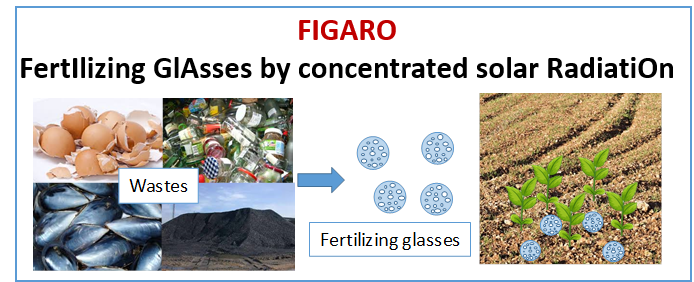- Financing entity
- EU, 7th Framework Programme (SFERA II Programme)
- Duration
- 2019-2020
- Principal investigator(s)
- Maximina Romero Pérez
- Budget
- Official web
Plants meet their nutritional needs for growth by absorbing soil nutrients, water, and carbon dioxide, in addition to sunlight. Plants require about 20 chemical elements to support all their biochemical needs and complete their life cycle. These elements called essential nutrients can be divided into macronutrients (N, P, K, Ca, Mg and, S) and micronutrients (Mo, Cu, Zn, Cl, Ni, Co, S, Si). Soils naturally contain many nutrients but the soil becomes impoverished by successive harvests. If the nutrients are not replenished, plants suffer nutrient deficiency and stop growing. For this reason, chemical fertilizers play an important role in maintaining soil fertility, increasing yields and improving harvest quality. However, chemical fertilizers release nutrients quickly leading to an excess of nutrients in soils, which tends to migrate into the environment through runoff and leaching, causing severe environmental problems associated to groundwater pollution. Given this situation together with the increase in population and the scarcity of agricultural soil surface, it is essential to find new production systems based on the implementation of sustainable fertilizer materials for promoting sustainable consumption and production patterns.
The use of glass as fertilizer materials seems a viable alternative to optimize the processes of fertilization of different kinds of plants in the most varied types of soils. Through a controlled formulation, glasses are able to accommodate in their vitreous network all the macronutrient elements and micronutrients essential for the development of the plants. The concentrations of nutrients in glasses can be lower than those existing in conventional fertilizers. However, glasses have the advantage that through the modification of their composition, it is possible to control their solubility and therefore, the release speed of nutrients. In this way, the absorption of nutrients by the plant is sequential and more efficient and simultaneously, the contamination of soils minimizes. In this sense, in recent years some research has been carried out aimed at the development of fertilizers based on glassy matrices).
In general, melting of glasses entail a great consumption of energy due to high temperature required. If this energy requirement comes from fossil fuels, the process of melting has also associated a high environmental cost. About 75% of the energy consumption in glass manufacturing processes corresponds to the melting stage in the furnace. The theoretical energy requirement to convert the mixture of starting raw materials into a homogeneous melt is estimated about 2.7 GJ/t. This value only considers the reaction enthalpy and the enthalpy changes associated with heating the raw material mixture from room temperature to the melting temperature. The real energy consumption for glass melting in the industry can vary from 3.5 to 40 GJ/t depending on the design and dimensions of industrial furnaces. Therefore, it is essential to find new sustainable melting techniques in order to reduce the use of non-renewable energy. In this sense, the researchers of this proposal have shown in a previous project that concentrated solar radiation is a promising technology for high temperature glass melting processes.
